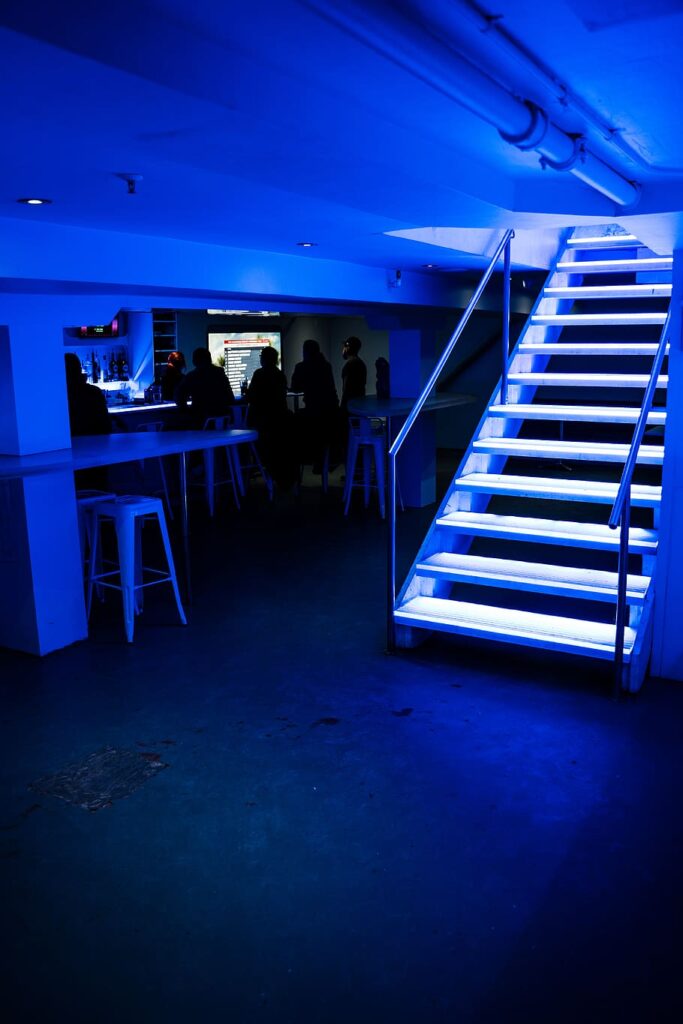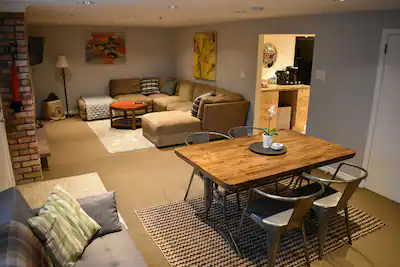When you’re deciding how to light a basement, there are a few things that have special lighting needs. The best way to handle these is by using recessed lighting in the ceiling. If you don’t want the expense of having someone in to install it for you, though, a number of other options can be used as an alternative.
Basement lighting is crucial to creating a comfortable and inviting living space. Proper lighting can make all the difference whether you’re using your basement as a home theater, game room, or guest bedroom. With the right basement lighting, you can transform a dark, gloomy space into a bright, welcoming area in which you and your family will love spending time. Whether you opt for recessed lighting, track lighting, or pendant lights, there are countless options. You can add dimmer switches to create a cozy atmosphere for movie nights or a brighter ambiance for work or hobbies. With basement lighting, the possibilities are endless, and you can customize your space to suit your needs and personal style.
1. A Floor Lamp with a Shade
Along one wall or corner or at either end of the room, floor lamps give good general illumination. To minimize shadows from the lampshade itself try and position them where they won’t cast their shade onto work areas such as desks – especially if you’re trying to use them for studying purposes. This may also help create a balanced feel to the lighting in the room.
2. Track Lighting for a Computer Workstation
One or more track lights can be used on a work surface such as a desk – either directly over it or slightly off to one side of it. The advantage of this is that they’re adjustable, so you can raise and lower them as needed to do different tasks at your computer. A disadvantage of using this type of light is that they don’t have very good illumination beyond their immediate area.
3. A Low-Wattage Desk Lamp with an Art Glass Shade
Office desks need two forms of lighting; task lighting for reading papers and documents directly in front, and the ambient lighting that ensures everything else isn’t in total darkness. A desk lamp that uses low wattage bulbs – perhaps just 15-25 watts – is ideal for this purpose, especially if it has an art glass shade.
4. A Larger Lamp with a Tabletop Base
Basement living rooms need two forms of lighting; task lighting directed downward onto surfaces such as couches and chairs where people are going to be sitting or reclining, and ambient light to help ensure they don’t feel like they’re stuck in a cave underground. A large floor lamp provides the best combination of both of these options, the only downside being the expense associated with buying one, unless you already have one available that isn’t currently in use elsewhere!
5. Sconces Up Against the Wall
Installed on either side of a fireplace, or along an entire wall, sconces provide great ambient light that will keep everything else in the room illuminated. The best thing about them though is that they’re much easier to find at just about any department store, so you don’t have to worry about being stuck with something expensive if you choose this form of lighting for your basement.
6. Recessed Lighting Installation
If none of these other forms of basement lighting ideas are appealing, consider having recessed fixtures installed throughout the room. They do cost more than other options – although not as much as buying larger floor lamps – but they also give off brighter illumination and produce less shadowing behind them as a result.
The purpose of this blog is to give our visitors as much information as we can on the subject of Basement Lighting and hopefully, allow them to make an informed decision based on what they’ve learned.

Instructions
You should always consult a professional before beginning any construction or remodeling project, including all electrical work – particularly when working with 240 volts receptacles! If you are unsure about anything contained within, please ask for assistance from us or from a contractor before proceeding.
As a contractor specializing in basement finishing, often asked what type of lights a person should use in their finished basements – there is actually a lot of controversy over this among contractors! It’s been my experience that an energy-efficient light-bulb doesn’t necessarily equate with effective task lighting when used within a space such as a basement. This is a place where a person would likely appreciate a brighter light source in order to be able to see what they’re doing. In professions such as construction, you have to be sure that the tools and supplies you have on hand are ready to use – otherwise it’s just a waste of time!
Read More: Natural Drain Unclogger And Its Use In Different Ways
Floor Lamps
A floor lamp provides both ambient illumination for all other areas in the room, and task lighting for specific areas depending upon its distance from various portions of your work space. Whether this means being near an area where you’re standing at a table saw, or having access to a recessed fixture in the ceiling when operating a sewing machine in the corner, you’ll want something that allows you to move the light around when you need it. Of course, this means that you’ll have less ambient light in your room when you’re finished, but then again – that isn’t always a bad thing!
A lot of homeowners are under the assumption that hanging up their existing basement lighting fixtures is harder than it actually is, so they resort to using ugly and costly builder lights instead. If any of these people were to ask me what I thought about installing new recessed task lighting, I would tell them all they have to do is select one which they will be able to install on three different surfaces:
- Inside drywall
- Outside drywall
- Suspended from joists above with a nail or screw
Just make sure that you buy a model which is capable of withstanding such an installation (which usually means buying one rated for either “IC” or “ICC-S” as this stands for interior/exterior drywall and suspended joists).
These lights are great if the room has low ceilings and poor insulation – they will help prevent heat loss (and save some on your cooling bill too!) by eliminating shadowed areas. However, these fixtures completely ignore the benefit of having task lighting focused directly on where it’s needed most. The size of halogen PAR30 floodlight can vary from 15 to 50 watts, so they pack quite a punch even though they’re only emitting light.
Conclusion
The basement lighting is the most suitable in the ceiling lights. The other option is track lighting which is also good for use in recessed ceilings. The track lighting is less expensive and easy to use than the others. You can fit them by yourselves in any space. You can fix them in your desired place.
Apart from this, if you are interested to know more about plan for Exterior Home Remodelling then visit our Home improvement category.











